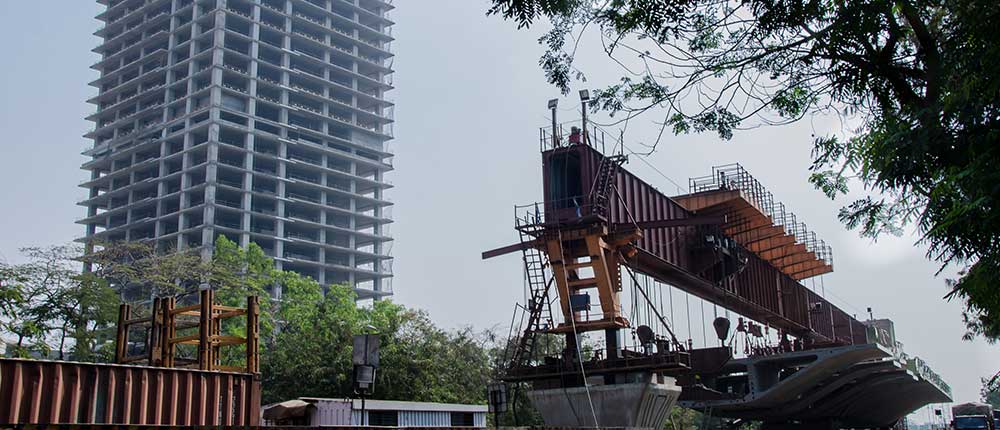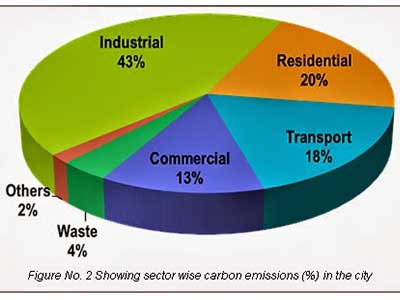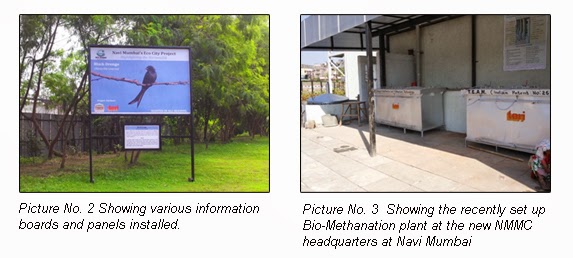 Eco–city broadly means a human settlement modelled on the self–sustaining structure and functioning of natural ecosystems. It is developed on the lines of integrated urban planning and management programmes addressing social and ecological health of the city. Navi Mumbai, a planned twin city of Mumbai, is ready to take up another stride towards sustainability through a joint venture of TERI and NMMC (Navi Mumbai Municipal Corporation) under the project “ECO–CITY”. Cutting across three major sectors- residential, industrial, and government, the Eco-city project shall be accomplished in two phases in the span of three years. Phase I focussed on estimating the city level carbon emissions of Navi Mumbai and preparing a comprehensive action plan for implementing the Eco–city project. The ongoing Phase II of the project shall witness the implementation of the action plan developed in Phase I. The project shall be unique in terms of its implementation as the plan and its execution would be a simultaneous and an integrative process. Overall, the project would be implemented as a PPP model (Public–Private Partnership), with a strong participatory role played by the public as well as private sector of Navi Mumbai.
Eco–city broadly means a human settlement modelled on the self–sustaining structure and functioning of natural ecosystems. It is developed on the lines of integrated urban planning and management programmes addressing social and ecological health of the city. Navi Mumbai, a planned twin city of Mumbai, is ready to take up another stride towards sustainability through a joint venture of TERI and NMMC (Navi Mumbai Municipal Corporation) under the project “ECO–CITY”. Cutting across three major sectors- residential, industrial, and government, the Eco-city project shall be accomplished in two phases in the span of three years. Phase I focussed on estimating the city level carbon emissions of Navi Mumbai and preparing a comprehensive action plan for implementing the Eco–city project. The ongoing Phase II of the project shall witness the implementation of the action plan developed in Phase I. The project shall be unique in terms of its implementation as the plan and its execution would be a simultaneous and an integrative process. Overall, the project would be implemented as a PPP model (Public–Private Partnership), with a strong participatory role played by the public as well as private sector of Navi Mumbai.
Outcomes and impacts
- The Phase I of the project very successfully articulated and submitted a detailed 'Action Plan' comprising various components together, which will drive sustainable development in the city. Along with the action plan, baseline carbon estimation was undertaken at the city level where the emissions from the city were calculated in a very methodical manner. The study findings revealed that the net emissions from the city, from various sectors account to approximately 2.8 Million tCO2e, with per capita emissions to be 2.51 Metric tCO2e. Sector wise emissions are illustrated in Figure 2

- Furthermore, in addition to quantitative assessments and technology demonstrations, outreach and awareness generation is also one of the strong components of the Phase II. It was realized that the citizens should be made aware of the rich biodiversity existing in the city. As seen in Figure 3, various information panels and boards were set up across the city at various strategic locations to highlight the significance and existence of the native biodiversity of Navi Mumbai.
- Furthermore, in the course of the study, it was also realized, that solid waste was another upcoming and threatening issue for the city. In order to address that and demonstrate a very scientific and technological solution, a biomethanation plant based on TERI's TEAM (TERI's enhanced Acidification and Methanation) technology was set up in the newly constructed premises of the NMMC headquarters (Picture No. 3) to treat its canteen waste.

Objectives
- To devise programs and eco-friendly strategies for making Navi Mumbai an "Eco-City".
- To estimate the carbon emission of the city before and after implementation of the project/programs.
- To identify and focus on the critical issues pertaining to three major sectors - Residential areas, Industrial belts and Government sectors.
- To establish a strong network of government agencies, residents, industrialists, builders and other stakeholders for maximizing the impact of the project activity.
- To evaluate the impact of the programs/project.

